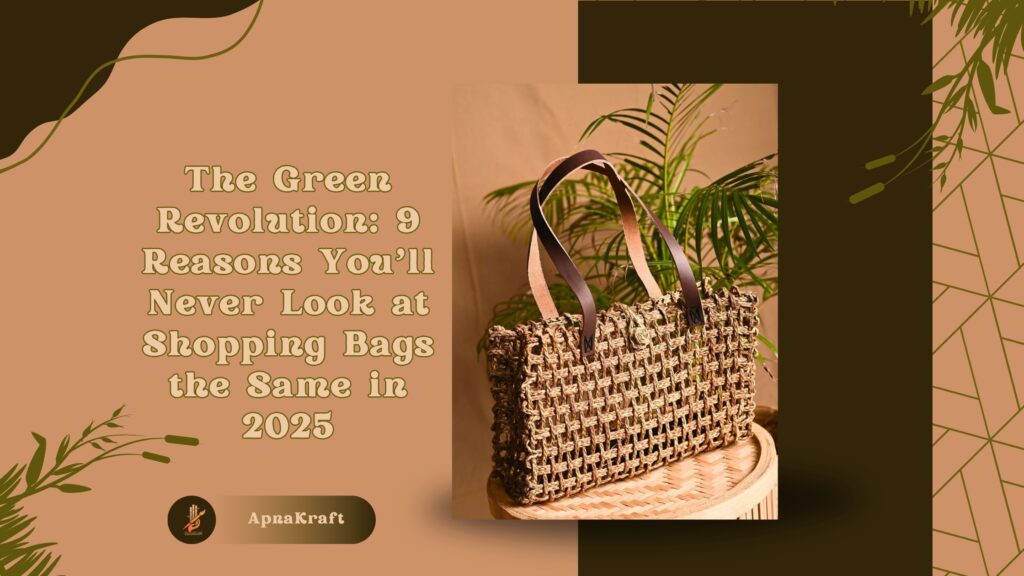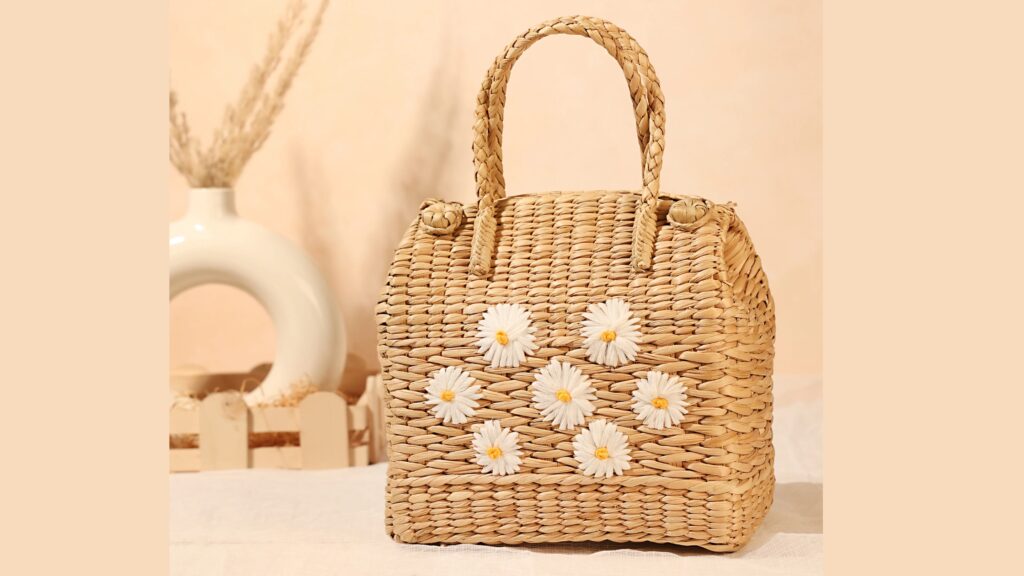Plastic is out. Natural packaging is in.
Every year, the world consumes trillions of plastic bags, many of which end up polluting landfills and oceans. But there’s a quiet revolution happening in stores, homes, and supply chains—led by a sustainable innovation that looks good, works well, and breaks down naturally.

We’re talking about grass bags—a new generation of biodegradable, eco-friendly packaging that’s changing how we think about everyday use. They’re not just a trend—they’re transforming the way people shop, pack, and brand responsibly.
In this article, you’ll learn:
- What grass bags are made from
- How they compare to plastic and paper
- The biggest benefits for businesses and consumers
- Real-life testimonials and eco-proof
- How to use them efficiently
What Are Grass Bags Made Of?
Grass bags are crafted from natural grass fiber pulp, often combined with recycled materials. This makes them strong, sustainable, and suitable for various commercial and everyday uses.
Key Characteristics:
- Made from fast-growing grass species
- Processed with minimal water and no harsh chemicals
- Fully compostable in home or industrial compost systems
- Lightweight but durable enough for reuse
- Ideal for branding with eco-safe inks
9 Powerful Reasons to Switch to Grass Bags
1. Naturally Biodegradable
These bags break down in just 60 to 90 days under composting conditions. Unlike plastic, they don’t leave toxic residues or microplastics behind.
2. Saves Significant Water
Grass-based pulp production uses up to 95% less water than traditional paper bags, making it far more sustainable.
3. Chemical-Free Manufacturing
No bleaches or synthetic treatments are used, making Grass fiber bags safe for food contact and eco-friendly from start to finish.
4. Surprisingly Strong
Despite their natural origins, these bags can carry a good amount of weight, making them reliable for groceries, retail, or gifting.
5. Stylish and Customizable
They feature a unique, earthy texture and are perfect for printing logos and brand messages using soy-based or water-based inks.
6. Supports Local Agriculture
The grass used is often sourced from local farms, encouraging sustainable agriculture and rural employment.

7. Compostable at Home
No need for industrial facilities—grass bags can decompose in your home compost setup.
8. Ideal for Eco-Conscious Businesses
Retailers and brands are adopting these to show their commitment to green practices—and customers are responding positively.
9. Cost-Effective in the Long Run
While they may be slightly more expensive than plastic at first glance, they offer long-term savings through reuse, brand loyalty, and lower waste management costs.
Grass Bags vs. Traditional Alternatives
| Feature | Grass-Bags | Plastic Bags | Paper Bags |
|---|---|---|---|
| Biodegradable | Yes (in 90 days) | No | Sometimes |
| Compostable | Yes | No | Partially |
| Water Usage | Very Low | Medium | High |
| Chemicals Used | Minimal | High | Medium |
| Strength | High | Medium | Low to Medium |
| Reusability | Yes | Rarely | Limited |
| Safe for Food | Yes | No | Depends |
Where and How to Use Grass Bags
Incredibly versatile:
- Retailers: Use them for clothing, boutique items, or as gift bags
- Restaurants & Cafes: Perfect for takeaway or organic packaging
- Events & Weddings: Eco-friendly goodie bags or swag packaging
- Home Use: Great for groceries, produce, and even storage
- Corporate Gifting: Present a green brand image with custom-printed bags
Frequently Asked Questions
What are grass bags and why are they important?
Natural grass pulp bags are biodegradable packaging made from grass fiber pulp. They are important because they reduce plastic pollution, use less water, and offer a sustainable packaging solution.
Are grass bags suitable for all businesses?
Yes. Whether you run a bakery, fashion store, or event company, Grass fiber bags can align with your sustainability goals and appeal to eco-conscious customers.
How long do grass bags take to decompose?
Typically, these bags decompose in 60–90 days under normal composting conditions, making them one of the most eco-efficient options available.
Do grass bags cost more than plastic?
While the upfront cost may be slightly higher, they provide long-term value in brand reputation, reuse, and environmental impact reduction.
Can they hold heavy items?
Yes. Grass fiber bags have strong tensile strength due to the fiber content and can safely carry groceries, books, and other mid-weight items.
What Customers Are Saying
“Our retail customers constantly compliment our switch to grass bags—it’s become part of our identity.”
— Arjun Patel, Store Owner, GreenLeaf Apparel
“Using these at our café not only reduced waste but actually became a selling point.”
— Tanvi M., Owner, Roots & Beans Café
“Grass bags helped us deliver on our zero-waste promise at our wedding. Guests loved the idea.”
— Rachna Desai, Event Host
Related Insights (People Also Search For)
- Compostable Shopping Bags
- Sustainable Packaging Options
- Eco-Friendly Grocery Bags
- Zero Waste Lifestyle Products
- Recyclable Gift Wraps
- Biodegradable Retail Supplies
Final Takeaway
Choosing grass bags isn’t just a packaging decision—it’s a sustainability statement. Whether you’re a business aiming to reduce your carbon footprint or a shopper making more conscious choices, grass fiber bags offer a reliable, beautiful, and responsible alternative.
Make the switch today and be part of the green revolution—one bag at a time.
Got questions or want to customize grass bags for your brand? Leave a comment or reach out—we’d love to help you go greener.
👉 Looking for a stylish, eco-friendly accessory made from grass?
Check out our handcrafted Kauna Grass Red Embroidered Clutch—a perfect blend of sustainability and elegance. Great for gifting or everyday chic!

